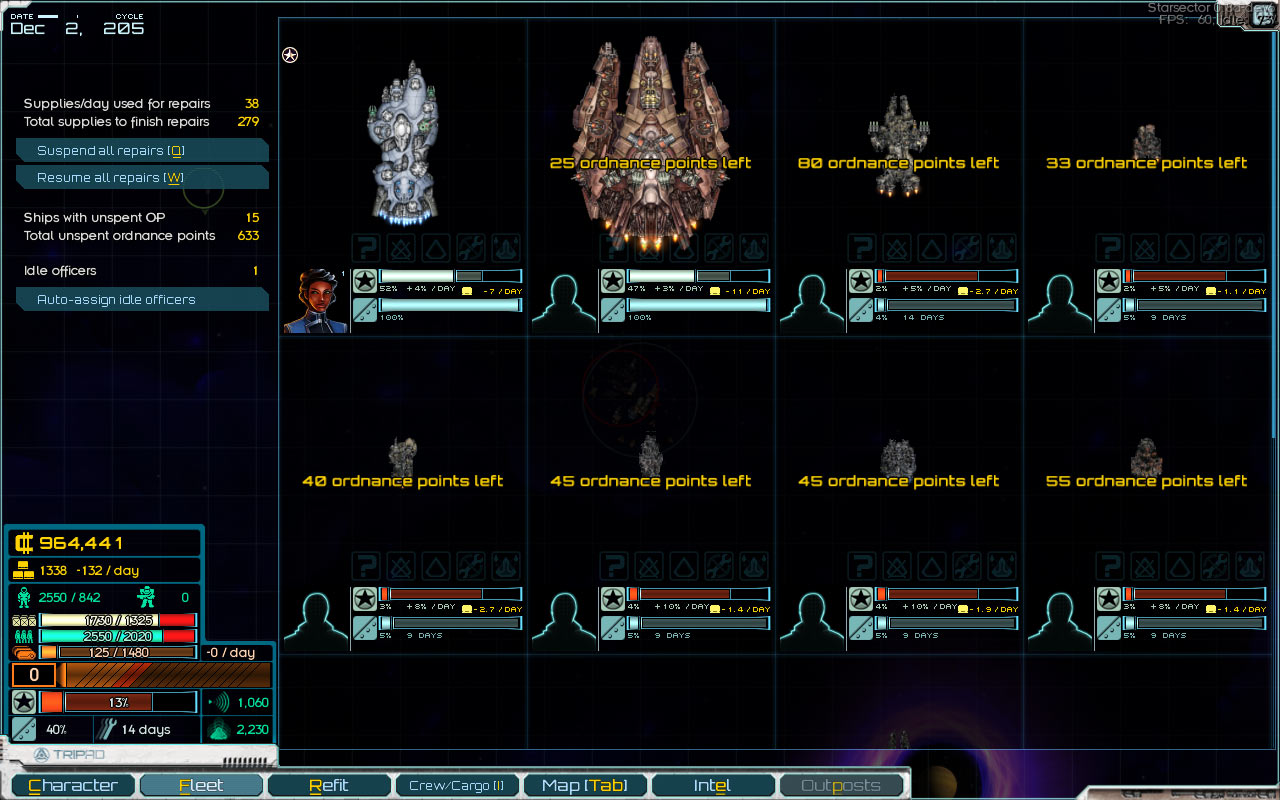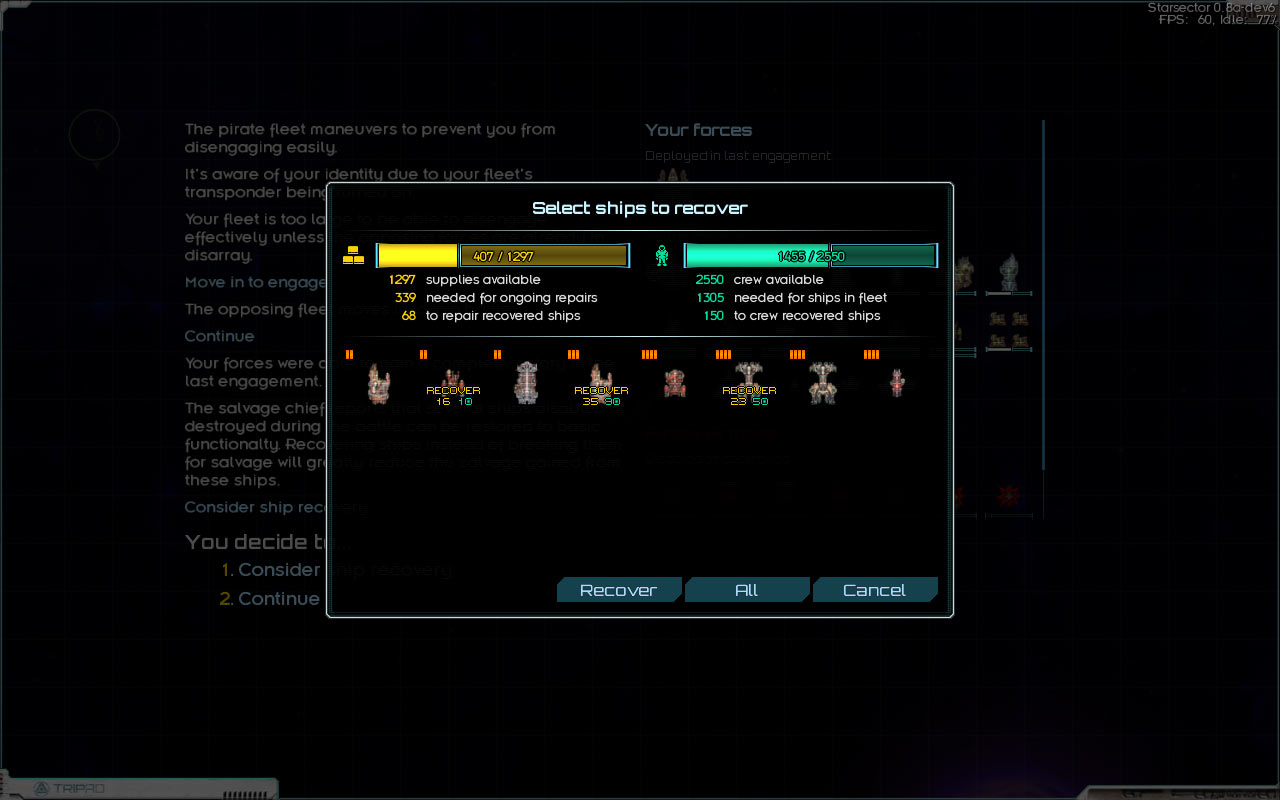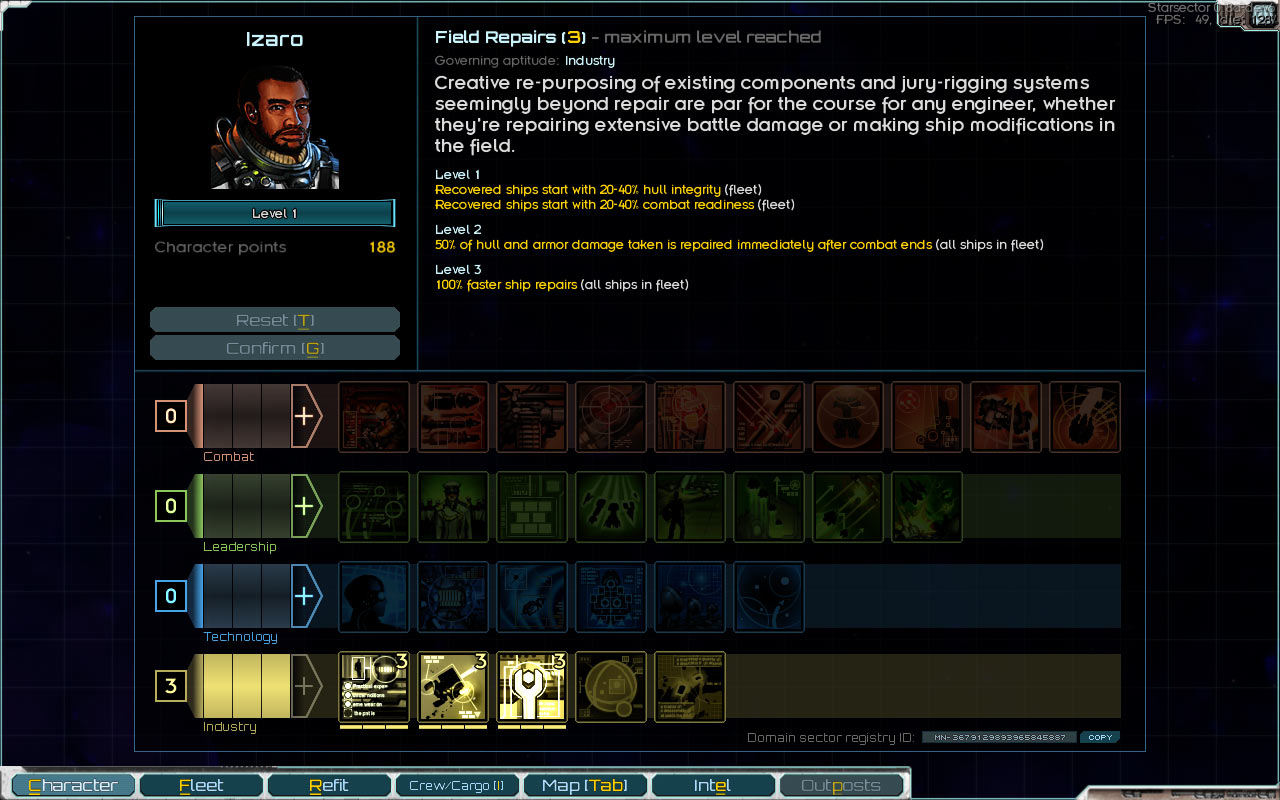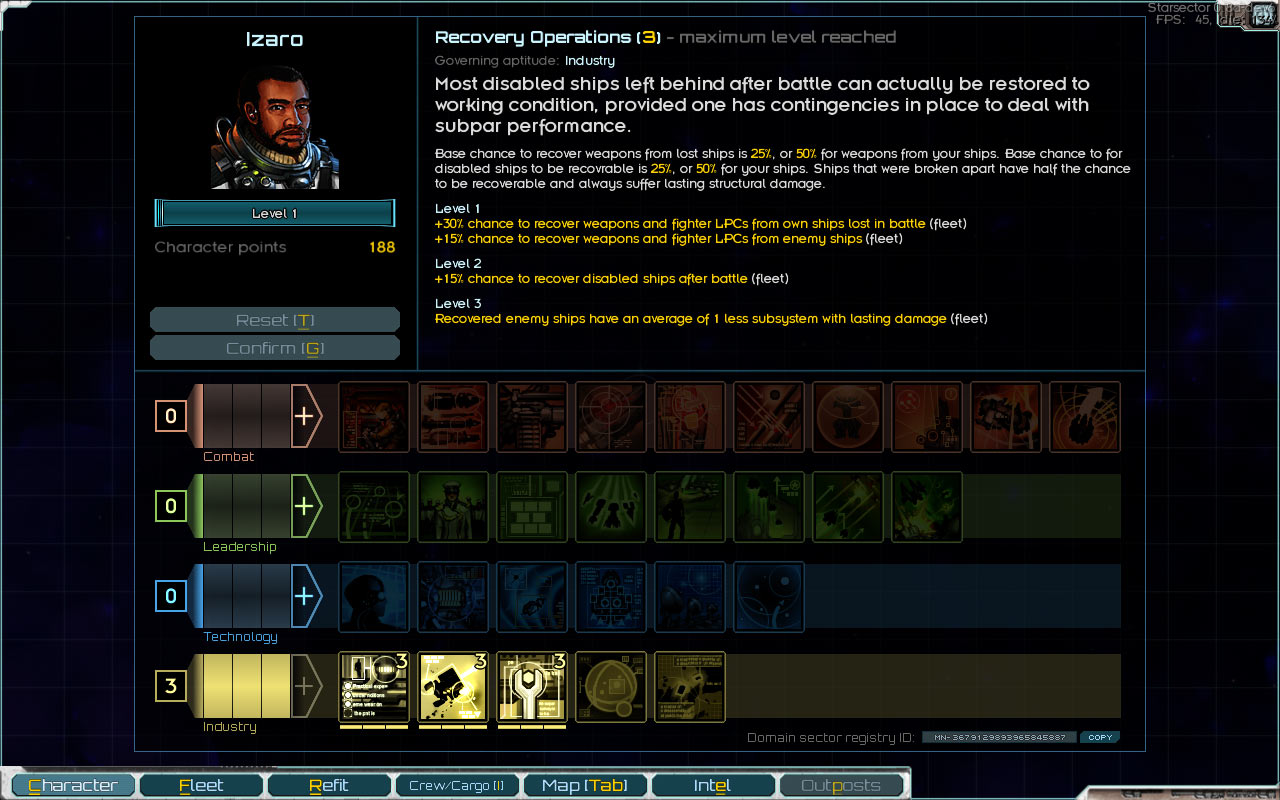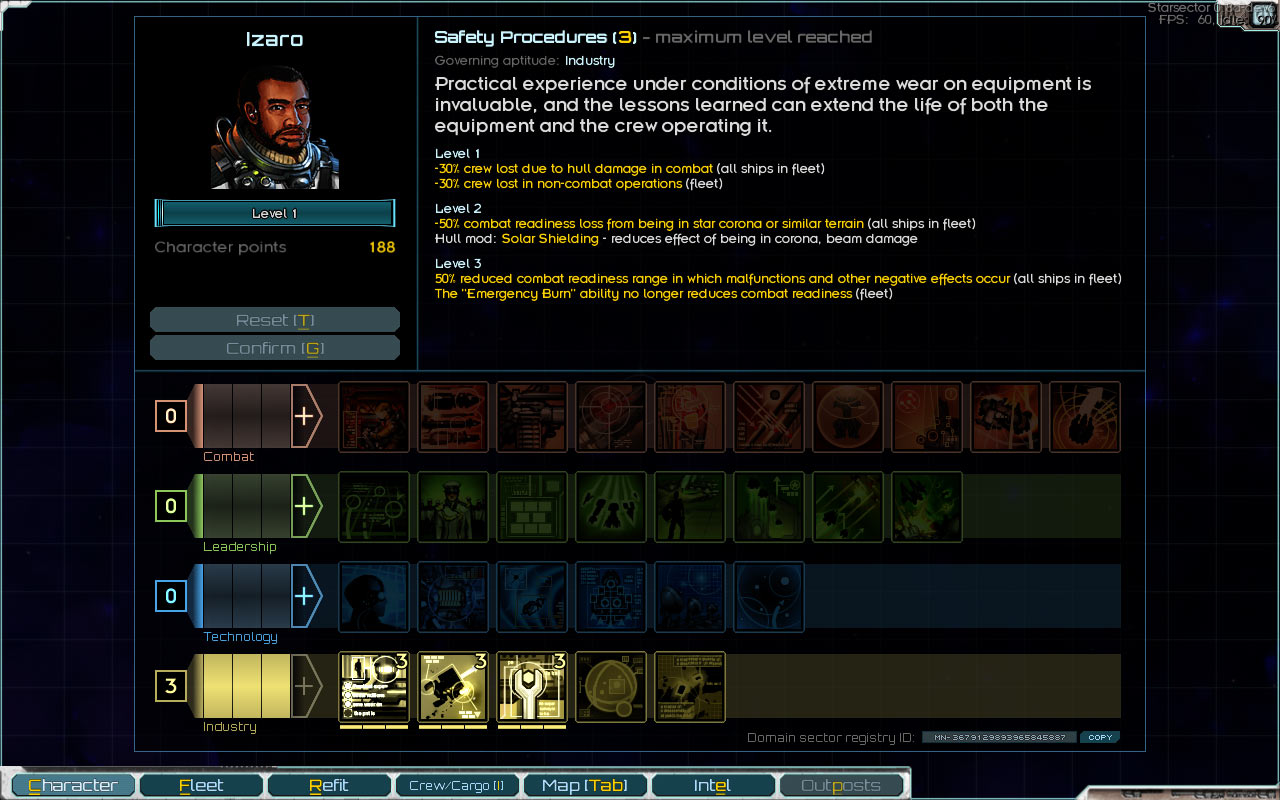Ship Recovery
In the previous post about the skill overhaul, I mentioned a different playstyle enabled by the Industry aptitude. That’s what I’d like to talk about here, but as part of a larger set of changes.
Ideally, you want to solve multiple problems with the same change. This is of course common sense (two birds, one stone) but for game design specifically, it can get tricky. There’s always an option of making a change just to solve a particular problem, and sometimes it’s the right answer.
However, if this is done too often, the danger is you end up with features that are only loosely related to each other – and you end up with a lot of them. A single solution that brings multiple systems together is going to make the design both simpler and deeper.
Let’s look at “industry needs its own playstyle” as a design problem, and see what else can be taken care of as part of the solution.
Industry Playstyle
What I wanted from that was clear from the start – using lots of low-quality ships and being able to handle ship losses easily. This could turn into something related to outposts and manufacturing in a hypothetical future, but those would be later-game mechanics in any case, and we’d like the Industry player to have something to do before that point.
So, the player needs access to more ships, and right away. And there’s all these other fleets with ships in them! The general thrust of the solution is pretty clear – disable those ships, send over a prize crew and fix them up a bit, and we’re good to go.
Now that we know what we’re doing – recovering disabled ships after battles – any related issues we can resolve while doing this are much easier to spot.
First off – as also touched on in the previous post – we’d like to encourage the player to deploy allied ships into battles more. Making officers stronger defensively is part of that, but something will still inevitably go wrong, and ship losses will still happen. It’d be great if the player could recover from those more easily.
Then, there’s the issue of acquiring specific ships. Let’s say you really want a Hyperion – a souped-up, high-tech frigate with a teleporter. Currently, boarding can be used for that, but it’s a frustrating experience (win battle, hope the dice roll comes up good, fail, reload, repeat many times) because it was never designed for that in the first place. It was meant as a “nice potential post-battle bonus”, but unfortunately also turned out to be “best way to get specific ships”, never mind that it’s still bad at that. So, if we can solve this here, that’d be all to the good.
Finally, a mechanic that half the time I forget even exists – the chance for disabled friendly ships to be repaired after battle. It’s a way to get some of the ships you’ve lost back, but you’re still likely to lose some of the (often more important) weapons they were carrying. Another problem is that it only comes into play in a “failed” state – a consolation prize after losing, and it’s unreliable at that.
An Aside About (D) Hulls
Many ships in the Sector have a (D) version of the hull, the “D” standing for “degraded” or “damaged”. Backstory-wise, these are the result of either flawed manufacturing or poorly-repaired battle damage. Mechanically, these hulls have intrinsic “hull modifications” that give them hefty penalties in combat. “Degraded engines”, “compromised armor”, “glitched sensor array”, that sort of thing. In the rest of the post, I’ll be calling those “d-mods” for short.
These are useful as lower-tier enemies for the player to face, but aren’t very effective in the player’s hands. For one, yes, they’re not as good as regular versions of those hulls, but more importantly, they use up the same amount of supplies while providing sub-par performance. Less bang, more buck.
You can probably see where this is going – recovered ships are unlikely to be in pristine condition, and are in fact the very source of (D) hulls as far as the backstory goes. But if we want the player to use them, their cost has to be in line with their performance.
So: d-mods reduce the amount of supplies it takes a ship to recover combat readiness lost from being deployed in battle, making (D) ships more cost-effective to deploy.
Currently, it’s a multiplier of 0.8 per d-mod, resulting in a ship with 4 d-mods (about the common upper limit) having roughly 40% of the base deployment cost. (For the mathematically-inclined: the supply cost will be rounded to the nearest whole number, but reduced by at least 1 if there are any d-mods on a ship.)
Ship Recovery Mechanics
After a battle, ships that have been disabled or destroyed have a chance of being recoverable. Destroyed ships – ones that broke apart during combat – have a considerably lower chance of being recoverable. It is, after all, quite a lot of welding to do.
The player can decide which ships they want to recover. It doesn’t cost anything, and it doesn’t require marines. It does cost quite a few supplies to get these recovered ships into combat-capable condition after they’ve been recovered, and the player is shown an approximate cost, as well as how much crew will be required to operate their newly acquired ships.
In addition, enemy ships being recovered will have a total of 2-4 d-mods, while a ship from the player’s side will gain 1 d-mod as part of the recovery process. This is also shown in the recovery dialog, and recoverable ships are sorted by the number of d-mods they have.
These mechanics entirely replace both boarding and disabled-ship-repairs.
As a baseline, that’s it, and even with the d-mod cost reductions, it wouldn’t be enough to make recovered ships cost-effective or resolve all the other problems we’ve laid out earlier. So now, let’s take a look at how the player can interact with these mechanics to make that happen.
Industry Skills
What we’re aiming for is the player deploying large numbers of low-quality ships, losing some, replacing those losses through ship recovery, and so keeping the whole process going, cycling through ships and gradually building up.
A big disclaimer: the screenshots I’ll show here will have hard numbers, but this needs a lot more playtesting, so the numbers will almost certainly be adjusted, possibly by a lot. So let’s focus less on the specific numbers and more on the idea behind each number.
Right. So! What are the main barriers to overcome in making this playstyle effective? The first is getting more ships in the first place, and baseline ship recovery solves this.
Second, these ships need to be cost-effective. D-mod cost reduction goes part of the way here – they’re effective to deploy once they’ve been fully repaired and restored to combat readiness, but that process is also expensive and time-consuming. It’s no good to recover a bunch of ships and have them drain all your supplies before they’re combat-capable.
The Field Repairs skill helps take care of this. Recovered ships start out with more hull and CR (“combat readiness”), reducing the total cost to fully repair them. It also makes repairs faster, and has a related bonus for making non-ship-disabling damage less expensive to recover from as well.
Third, disabled ships have a high chance to permanently lose some of their mounted weapons. One answer would be to remove that entirely, but I like it for thematic reasons, and besides, not every ship is going to be recoverable in the first place. And then there are going to be recovered enemy ships to outfit.
The “Recovery Operations” skill helps take care of this by increasing the chances of weapons from disabled ships being recovered. There’s also a bonus to ship recovery in general and an increased likelihood of receiving less d-mods on recovered enemy ships.
Finally, losing ships involves losing crew. The “Safety Procedures” skill helps mitigate this (as can installing Blast Doors on your ships), though an industry-focused fleet commander would still be wise to bring along some extra crew. Purely to operate newly recovered ships, of course, and not at all to replace continuous losses, what’s that, hazard pay? Of course not, no need to be so alarmist.
The skill also helps mitigate some of the common costs with running a larger fleet – combat readiness lost due to hazardous terrain, and using the Emergency Burn ability. As an extra bonus, it adds staying power to larger deployments – and makes ships combat-effective faster – by reducing the CR required to deploy ships safely.
Skill Analysis
A couple of things to note here. First off, the cost-mitigating bonuses are at the lower levels of the skills. The higher-level bonuses may be stronger, but to get off the ground at all, the player has to be able to afford this, and they’ll be able to do so early on.
Clearly, the skills are designed to be used together, but their effects are also separated so that there could be a good reason to pick one of the skills without the others.
Field Repairs is useful for quick and cheap recovery from ship losses or damage, even if you bought those ships the old-fashioned way. Recovery Operations gets you more access to weapons and ship hulls. Safety Procedures can be looked at as an exploration-oriented skill, and its bonuses are useful entirely outside the ship recovery context.
Autofit
We’ve got the mechanics for the industry playstyle squared away (more on solving the other problems we’ve talked about in a bit), but there’s another problem to solve in a different area. Outfitting multiple new ships between battles, or re-refitting your old-but-just-now-recovered ships, is going to get tedious. In other words, even if the mechanics work great and make the new playstyle different and effective, it could still be a drag because the UI doesn’t support it well.
So, let’s take a shot at solving this, too; and while we’re at it, maybe we can nuke the “manage variants” refit option, which was awkward at best (or, at least, heavily rebrand it).
The idea here is that you can easily outfit a ship by selecting a “goal” variant for it and selecting some options. If the goal variant has a dual flak cannon and you’ve only got regular flak? No problem, it’ll use that and spend the rest of the ordnance points on something else. All weapons have tags under the hood to indicate whether something is an upgrade or a downgrade over something else in a given role, so the algorithm is able to make do with what’s available even if it doesn’t exactly match what’s in the goal variant.
Is it going to do a perfect job? Definitely not. Hopefully, it’ll at worst provide a starting point for a few manual tweaks – and at best, it will do a good-enough job on a hull where tweaking it to perfection really doesn’t matter, since you’re likely to lose it anyway.
There’s also an “auto assign idle officers” button on the fleet screen, along with controls to suspend and resume all repairs – all things that are more important now that the player is potentially cycling through and repairing lots of ships.
Recovering from Ship Losses
So, you’ve deployed some allied ships into battle, and they didn’t come out the other side. You’re also not playing an Industry character, so none of the skills there are of any help, not that they would be sufficient. The base recovery mechanics aren’t enough either – only a 50% chance to get each of the lost ships back, with some d-mods for your trouble.
What we need here are some non-industry options to prepare for ship losses and be able to mitigate them. A range of options that doesn’t entirely depend on having specific skills would be nice.
Enter the first line of defense, the “Reinforced Bulkheads” hullmod. It prevents the ship from breaking into pieces when it’s disabled, and always makes it recoverable after battle if it was lost. It’s no coincidence that “autofit” can be told to install one on every ship!
We don’t want that to be a mandatory mod on every ship, though, so let’s have some more options. The “Damage Control” skill – either on you, or on an officer – makes a ship under that character’s command always recoverable as well. Though it might need to be welded together if it fell into pieces (resulting in a “Structural Damage” d-mod) – but at least they were, uh, well-secured pieces.
We don’t want the Damage Control skill to be mandatory, either. And, well, it isn’t due to reinforced bulkheads, but another option would be good to have. So: one of the perks of the Leadership-based Fleet Logistics skill makes all ships piloted by you or an officer always recoverable if lost. Something about the importance of getting supplies where they need to be in a time-critical situation, etc etc.
I think this should be a wide-enough range of options where nothing is going to feel mandatory, and there’s enough flexibility that every character will have access to something.
Restoration and New Ship Acquisition
However, there is still one problem – these recovered ships have d-mods. For some ships, that might be alright, but if that’s your shiny new Hyperion or Medusa, a permanent debuff like that isn’t going to feel good. Even if it’s something you can work with, just knowing that it’s permanent is uncomfortable. And, if ship recovery replaces boarding as a means of acquiring new ships, then that’s even more of a problem – you wouldn’t be able to get a new ship in pristine condition at all.
Thus, one more option: when docked at a port, you can “restore” a ship to peak condition, getting rid of all d-mods. This is quite costly, up to several times the cost of buying a new hull – but is always an option for a ship that’s worth it. In most cases, however, living with a d-mod or two is likely to be more cost-effective, especially given that some of them have been toned down a bit.
For using ship recovery to acquire new ships that you’re not able to find for sale, then – compared to current boarding there’s a much higher chance to be able to recover one, but a higher cost to fully restore it once you do have it.
Overall, we’ve got a mechanic that enables a new combat playstyle, helps mitigate ship losses (thus making another style more viable), and improves the experience of trying to get a specific new hull, while also replacing a couple of mechanics that are now redundant. As usual, there’s still much playtesting to do, but I’m hopeful it will achieve all those goals, even if some tweaking is necessary along the way.
Comment thread here.
Tags: autofit, d-mod, industry, restoration, ship recovery, skills, would hate to be the one told to weld that Onslaught back together and do it quick-like
